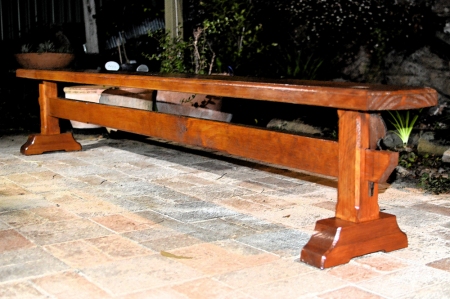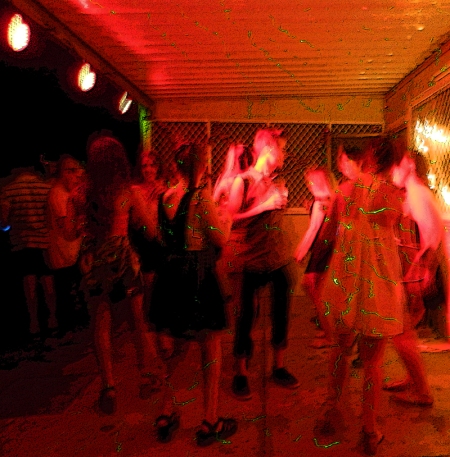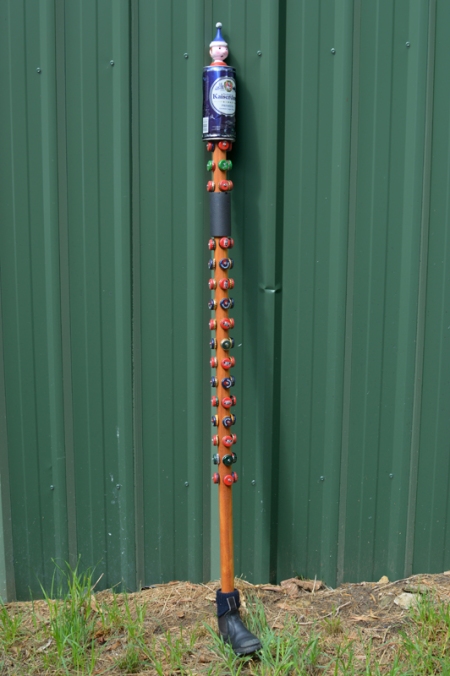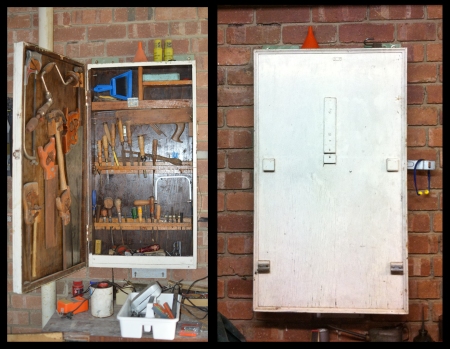
I have a materials rack in my workshop which was filled beyond capacity and so it was about time to use up some of my hoardings. Essentially I had a pine plank which was 2.4 meters long and some dunnage/bearers that I had scabbed from jobsite skip bins.
What do you do with a plank?……… well you make a bench of course!
Now I wanted to make a knockdown bench so I could pack it up if I had to. Thus I used two wedges to hold it all together ( 9° from plumb and 8mm thick, hardwood is advisable). No nails, or screws. I used ‘ Sketchup Make’ to draw up the plans above. The components are essentially;
- the plank
- the cross brace
- The legs x 2
- The wedges x 2
It was all fairly straight forward but the hardest part was manufacturing the two legs. The feet were made from two pieces of 90mm x 45mm stud glued together so I could band saw the ogee shape and cut the 10mm groove out of the bottom. Then the uprights had a mortise and tenon carved top and bottom to house the feet which were glued and the bench which is dry fitted. I was worried about the dry fitting at the plank end for stability but in retrospect the mortice and tenon works great. However if you lift the bench by the plank it will come off – you have to lift it by the mid rail, which I can do easily by myself. If you’re worried about this you might think about a dowel to pin it on or glue it permanently.

The other modification I would incorporate would be to shorten the plank to 1800mm to reduce the span. Due to the detail that I’ve drilled into the centre of the plank there is a weakness right in the middle. Now I can sit on ‘Ye Ole Benchwarmer’ with my wife and six foot four son no worries but I don’t think we would be doing it across an infinite abyss. Plus I like the little detail of a cross cut with a hole saw and routered with an ogee to fancy it up – a little design feature I nicked from a church pew. The cross brace was also chamfered with a router in the middle to add a little old world charm as were the uprights and feet.
This was a fun project and I use it to put my toolboxes on, which leaves them on a convenient height to rummage through. So if your interested in a plank with legs, I’d recommend making the two legs first, followed by the cross brace and leaving the mortises in the plank till last.
Any queries, I’ll try to help. Cheerio Ladies and Gents!













